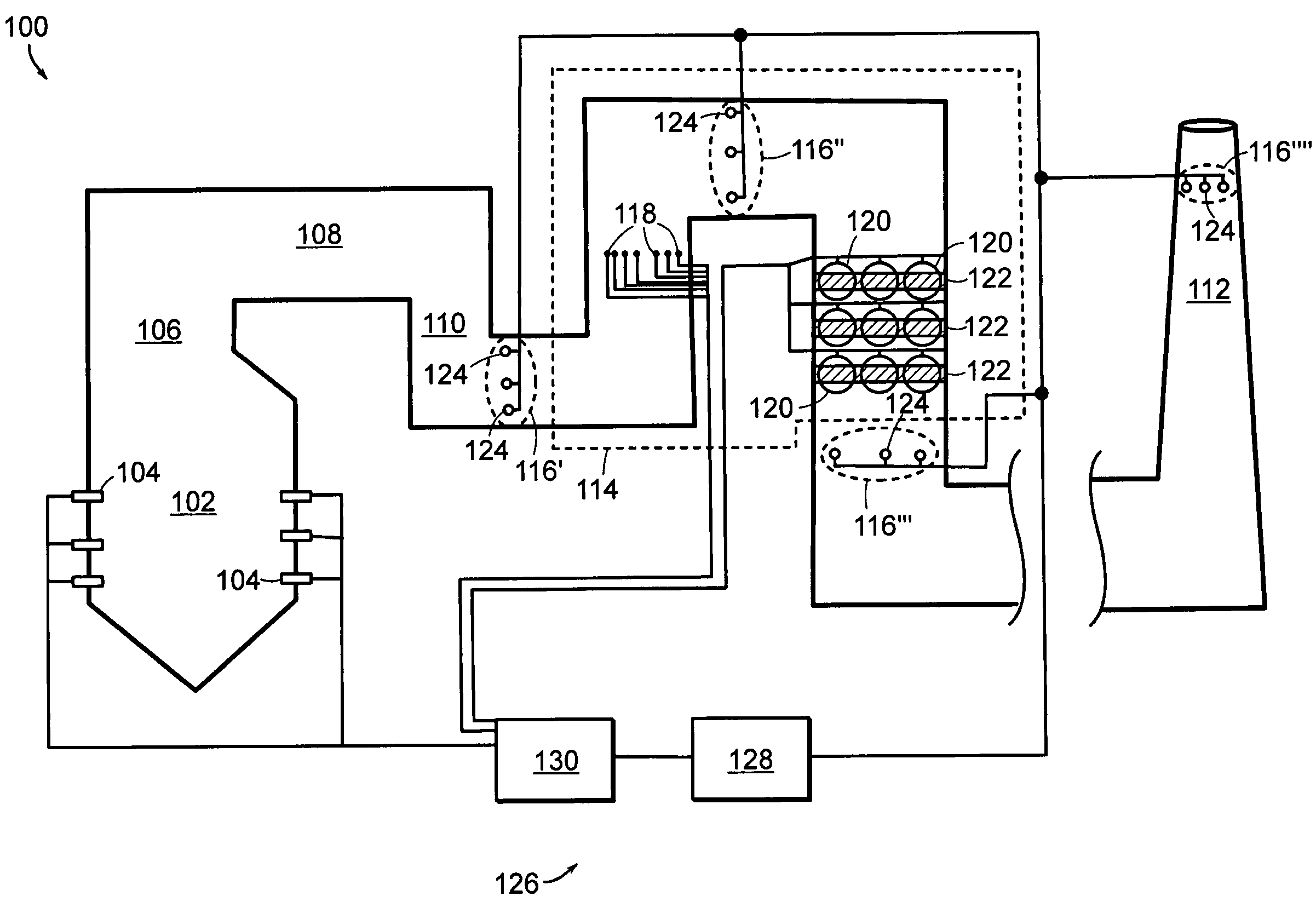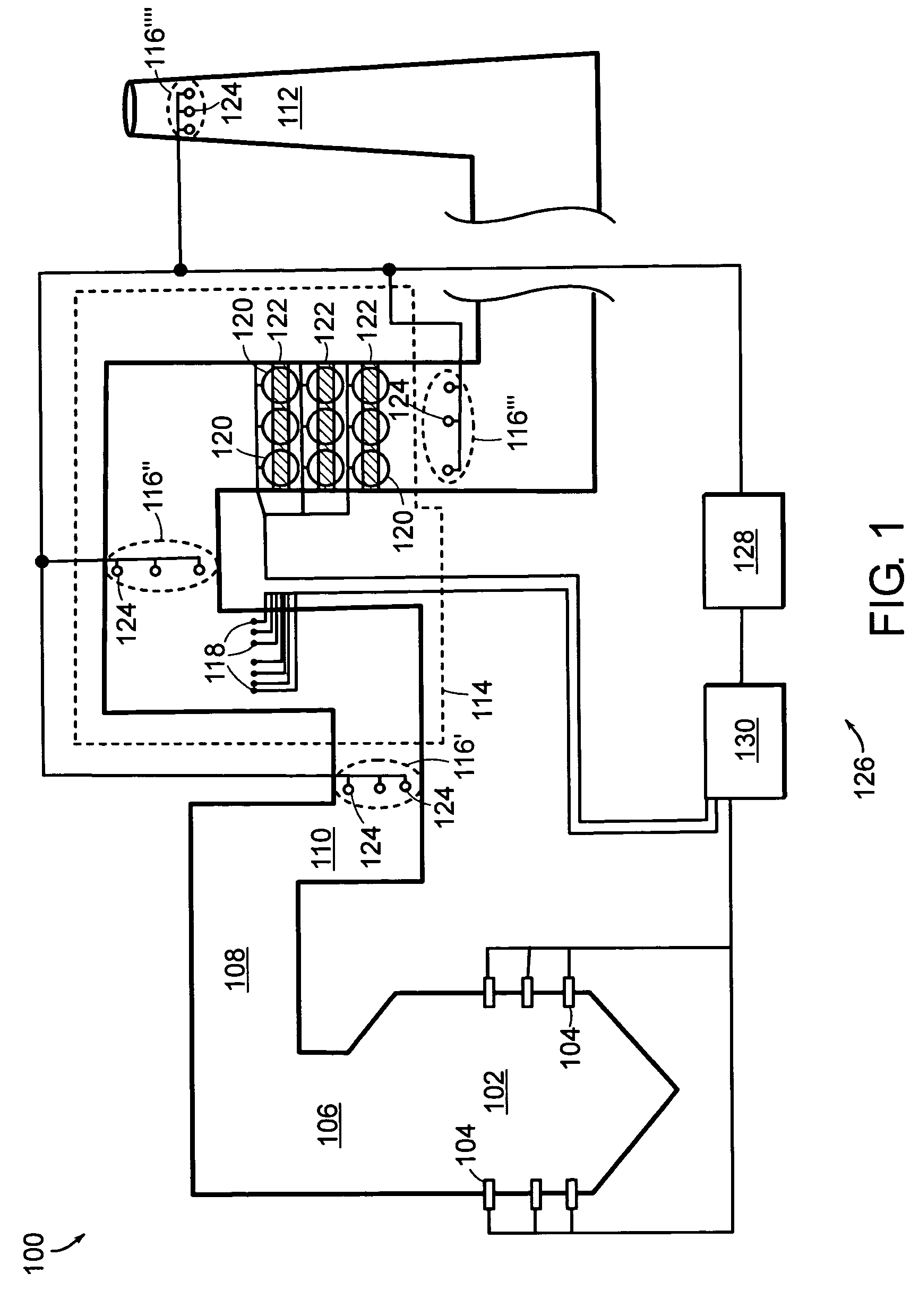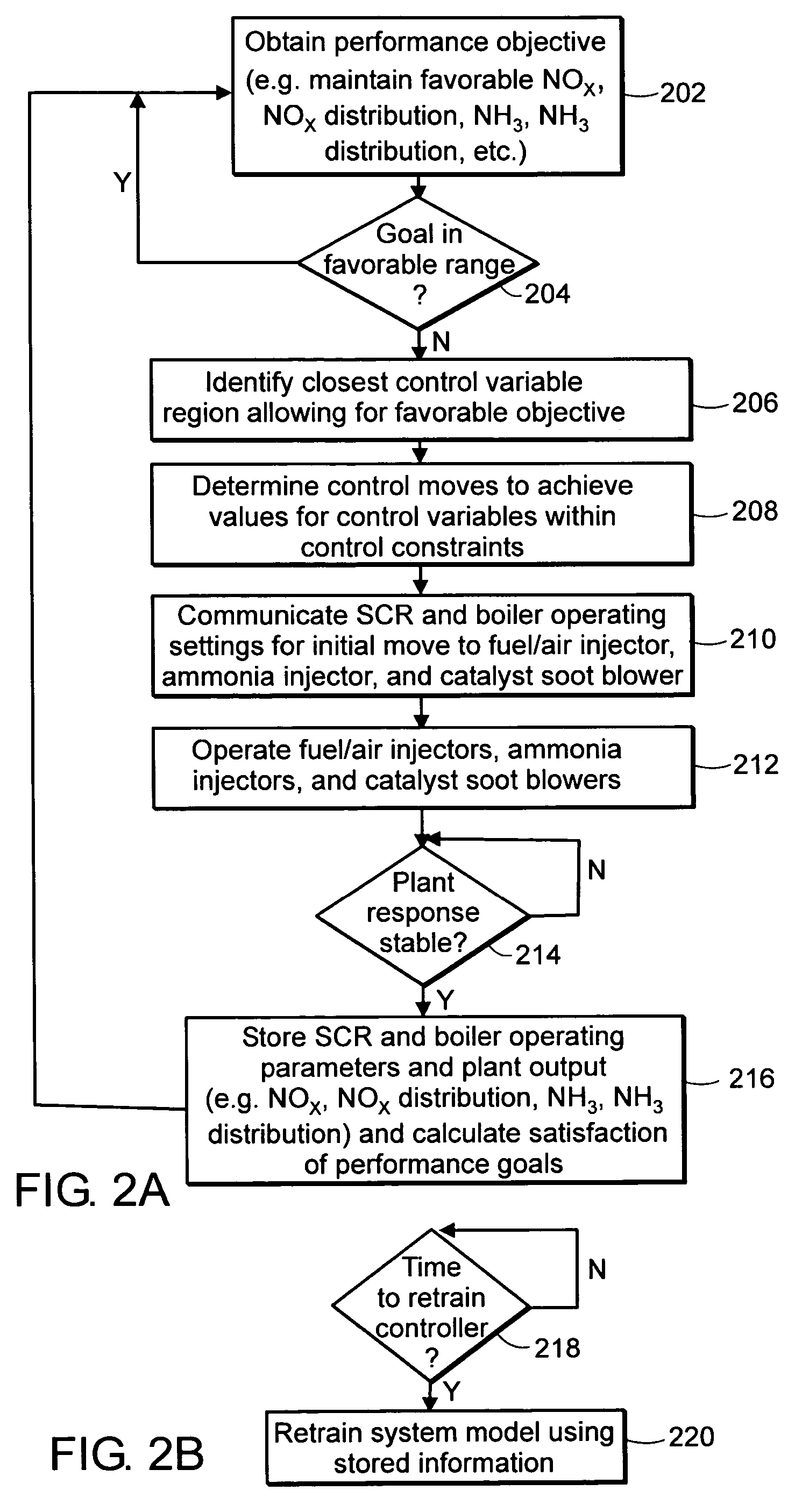Method and system for SCR optimization
a selective catalytic reduction and optimization method technology, applied in the field of fossil fuel boiler optimization, can solve the problems of ozone, a toxic gas, and subject to complex variability, and achieve the effect of reducing the cost of ozone, at a very high cos
- Summary
- Abstract
- Description
- Claims
- Application Information
AI Technical Summary
Benefits of technology
Problems solved by technology
Method used
Image
Examples
Embodiment Construction
[0023]In accordance with one or more embodiments of the invention, a system is provided for controlling SCR performance in a boiler. The boiler includes one or more generally cross sectional areas. Each cross sectional area can be characterized by one or more profiles of one or more conditions affecting SCR performance and be associated with one or more adjustable desired profiles of the one or more conditions during the operation of the boiler. The performance of the boiler can be characterized by boiler performance parameters. A system in accordance with one or more embodiments of the invention can include a controller input for receiving a performance goal for the boiler corresponding to at least one of the boiler performance parameters and for receiving data values corresponding to boiler control variables and to the boiler performance parameters. The boiler control variables include one or more current profiles of the one or more conditions. The system also includes a system mo...
PUM
 Login to View More
Login to View More Abstract
Description
Claims
Application Information
 Login to View More
Login to View More - R&D
- Intellectual Property
- Life Sciences
- Materials
- Tech Scout
- Unparalleled Data Quality
- Higher Quality Content
- 60% Fewer Hallucinations
Browse by: Latest US Patents, China's latest patents, Technical Efficacy Thesaurus, Application Domain, Technology Topic, Popular Technical Reports.
© 2025 PatSnap. All rights reserved.Legal|Privacy policy|Modern Slavery Act Transparency Statement|Sitemap|About US| Contact US: help@patsnap.com



